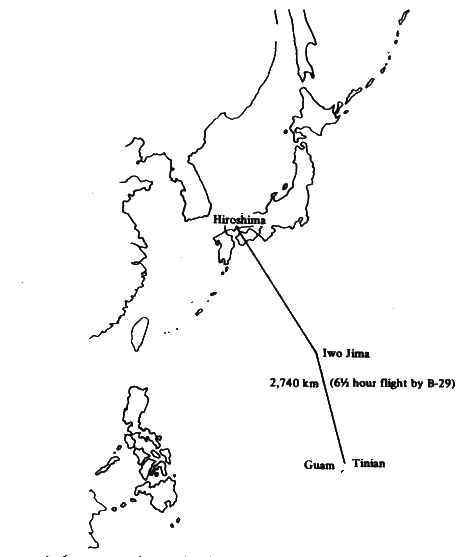 8:15 am., August 6, 1945
8:15 am., August 6, 1945
The atomic bomb was dropped from the B-29, "Enola Gay", accompanied by two other B-29s:
one dropped a measuring and communication apparatus with a parachute on it, and another took photographs of the spreading atomic bomb cloud.
A heavy cruiser, the Indianapolis, carrying an atomic bomb, left San Francisco on July 16, 1945 and arrived at Tinian on 26th of the month, where the atomic bomb was loaded on the Enola Gay. The Indianapolis was, four days later, (July 30) torpedoed and sunk by a Japanese submarine west of Guam.
Air-raid Alarms prior to the Atomic Bomb Strike
| Monday, August 6, 1945 | |
| 0:25 a.m. | Red air-raid alarm issued. |
| 2:10 a.m. | Red air-raid alarm cleared |
| 7:09 a.m. | Yellow air-raid alarm issued |
| 7:31 a.m. | Yellow air-raid alarm cleared. |
| 8:1 5 a.m. | The atomic bomb burst just before the second red air-raid alarm was about to be sounded. The content of the announce ment was intended to be as follows: "Chugoku District Army Information at 8:13 a.m.: three enemy Superfortresses proceeding westwards over Saijo area. Strict precautions should be taken." Therefore, nobody in Hiroshima had time to take shelter in a dugout at the moment of atomic bomb explosion. |